#there’s dwarf varieties
Explore tagged Tumblr posts
Text

Body diversity in Dwarven Women,,,,, Ryoko Kui marry me
#crying screaming etc#the middle girl in the line up is ME#i am also appreciating the variety of fantasy underwear#dungeon meshi#delicious in dungeon#dwarves#dwarf#crazee talk
3K notes
·
View notes
Text


in one of the few nice things to happen in 2024: behold the babiest babies to ever baby, 6 months later
#'removing corms early will stunt the plant'#absolutely true! also inevitable in this emergency rescue's case#so now its just a dwarf of a dwarf variety of a tiny cultivar and stands at a lofty 2.5inches#(its a bambino i have come to find out)#(its four siblings are not this small though they are still bitty)
39 notes
·
View notes
Note
as someone who has most of my dragon-related fandom experience in dragonriders of pern, which necessarily has a complex relationship with its author, i would like to lean on your thoughts for a question on a different dragon media.
does the eragon fandom have meta about what counts as canon? ex. from interviews, from the illustrated guidebook, and so on. does it have a history of interpretation?
im gonna be honest I was never in the Eragon fandom, I've read the books when I was too young to have internet access and now only returned to Eragon after learning that my friend has read it too, so my "fandom" is really just the two of us brainrotting about it together and posting our thoughts on tumblr
#I have no idea what the fandom is doing and to be perfectly honest I don't care#I remember there was the website shurtugal.com which was the biggest fandom hub but it's now defunct#and ik there's a subreddit and that paolini is posting on twitter#but as for my friend and I we generally just. see chris's later additions to the lore as soft canon#and I don't believe either of us has read any more recent additions to the universe after Inheritance#and neither of us really has the time or energy to do so. so we're sticking to the OG four books and making our own worldbuilding and ocs#eragon#inheritance cycle#fandom culture in general wasn't really a thing in czech republic until recently#our country is small so you naturally won't have as much media variety on the native scene#and stuff like cons only started coming here after the fall of the iron curtain#after a quick search it seems that the oldest cons (StarGate; Red Dwarf and anime) in Czech republic started in the early 2000s#and since most of the popular media is American you can imagine the chance of having any interaction with the author is extremely low#so there wasn't really a way to connect with other people over a piece of media except the internet (that is if you could speak English)#or any local meetings if you were lucky. and I believe Eragon never became so popular as to have those here
19 notes
·
View notes
Text
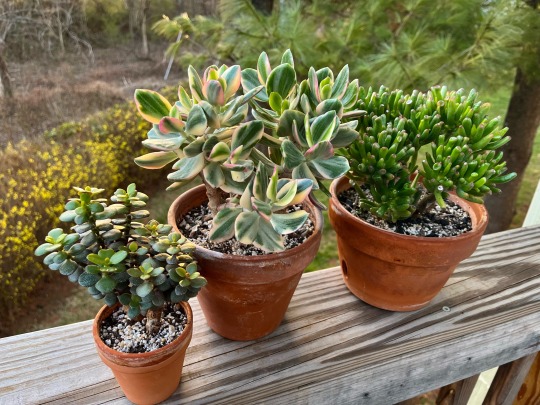
3 varieties of Crassula ovata (Jade plant)
#some dwarf variety + variegated + gollum#variegated jades are incredibly underrated imo#crassula ovata#jade plant#variegated jade#gollum jade#crassula ovata gollum#crassula ovata variegata#variegated#succulent#succulents#plant#plants#variegated succulent#variegated plant#crassula#succulentblr#plantblr#houseplants#botany#horticulture#mine
118 notes
·
View notes
Text
We just realized, more than 24 hours after the Round 1 info post, no one submitted:
"Magic Mirror on the wall, who's the fairest of them all?"
#or any variety#disney#Quotable Disney#yen sid comments#snow white and the seven dwarfs#the magic mirror#the evil queen
7 notes
·
View notes
Text
Want to see some neat things about how irises grow?
Remember when I dug up and divided ALL of my irises at my parents' place a few years back? And how I ended up with 50 rhizomes, and I had bought 9 more just a bit before that?
Well, my mom wants to try to amend the soil because it's not great. Most of the irises have just been surviving, but not well enough to bloom, and everything else planted in the area struggles similarly. In order to amend the soil, though, I needed to dig them all up.
Again.
I dug up 44 rhizomes this time, which is honestly a bit better than I expected. I knew that not all of the ones I put in were going to survive, but I was still surprised by how many I just dug up today.
Anyway, the learning bit!
So irises aren't bulbs, they're rhizomes. Each year they put up leaves at one end, and over time they kind of end up migrating in that direction. If they do really well at gathering and storing energy, instead of just continuing forward, they'll fork, putting up leaves on two sides and a stalk with blooms in the center. The following year, the pattern continues, going forward from each side of that fork. If a rhizome does REALLY well, you'll end up with a bunch of forks spreading out.


The one on the left has survived, but not gone very far, and the white at the end shows that I accidentally broke some of the old rhizome off when I was digging it back up. It also happens to be a dwarf variety, so the rhizome is smaller to begin with; all my other photos are of intermediate and tall bearded irises with much larger rhizomes.
The one on the right has done well enough to grow forward for a few years, with the oldest of the rhizome at the bottom (still healthy and full of stored energy!) and the newest year's growth at the top. Looking at the rhizome itself, I'd guess that one is about 4 years (which makes sense, 'cause I think I did the splitting back in 2020).


The one on the left bloomed this year; you can see the flower stalk dried out in the center, and the new fork in the rhizome to the sides. Next year, they'll continue in those two directions, and it won't go forward from the stalk any longer.
The one on the right bloomed a few years back, and though it kept growing forward from there, it hasn't bloomed since. The other side of the fork also died off, and it's now only growing in one direction again.


Last but most certainly not least we have THIS beast. This one has bloomed the last two or three years in a row. I honestly can't tell if the guy at the bottom right is part of the same rhizome or another one I planted too close that got subsumed by this monster, because it took ten minutes to get most of the clay off and there was still more. I'll need to actually rinse it off with the hose to really see if it's all one plant or two.
But I'm 95% sure that this guy is going to bloom again next year because of those nubs down along the bottom. They were below the soil, and they're too thick to be new roots, so I'm guessing that's what future growth looks like. Honestly, this guy should probably be divided, but I also don't want to ruin the chance of it blooming next year, so I'm going to put him back in the dirt as is and maybe divide next year after blooming season.
Anyway, irises are my favorite, and I think it's intriguing how they work. I'm hoping that we can get the soil a bit more balanced and that they'll do better after replanting them, because even though I just dug up 44, we only had 4 or 5 bloom this year. They aren't thriving in the soil as-is, because for as long as they've been established we should have had more blooming than that. It was still the best year since dividing them, though.
I've brought a bunch of them over to my apartment and I'm going to try them out in containers, mostly the dwarf varieties I had. ONE of the dwarfs bloomed this year and it was gorgeous, but I'm hoping the rest will do better in new soil with some extra attention.

#irises#gardening#flowers#long post#I'm going to be digging clay out from under my nails for a week#honestly I don't think the clay is the worst part#I think the worst was where there's LESS clay and the water just drains straight through#oh that last pic you can see the rhizomes of the ones behind it which didn't bloom this year#but you can see the fork that shows it bloomed last year or the year prior#I DID plant them slightly below ground they just kind of eroded to the top over time#you're actually not supposed to plant them very deep and apparently should only cover the rhizome if it gets really hot where you are#one of the ones I dug up I had planted too deep and it forced itself back up it's like an S it's kind of funny#there's an iris grower in town that has THOUSANDS of varieties you can browse and purchase from every summer#her site says over 3000 anyway#I'm not allowed to go anymore :|#I have too many#but that's why I'm not going to be TOO sad if they don't survive in the containers#the thing that makes me saddest is the ones that keep blooming are not the ones I picked for myself#they're the kind of bland ones I picked for my mom or she picked for herself. Just a really normal pale purple. Meh.#the really fun colorful ones haven't bloomed yet and I've genuinely forgotten what they're supposed to look like ;3;#except for that dwarf I love him#I also found a few peanuts in shells in the dirt while I worked I think a squirrel must have been stashing them?
17 notes
·
View notes
Text
sneakily brought my wallet along to the Family Seasonal Tree Purchase Outing and raided the seasonal potted evergreens display to add a 4 inch alberta spruce to my collection
#my posts#'stop buying plants' stop me yourself#what you don't seem to understand is that my lust for dwarf varieties of trees cannot be contained
13 notes
·
View notes
Text
Decided to create some alien slugs for a comic. These splorpable little fellas are generally the least conflict-seeking sillies to ever be found by humanity. But, unfortunately they have to deal with the events I'll only detail once i get to that point in the story.
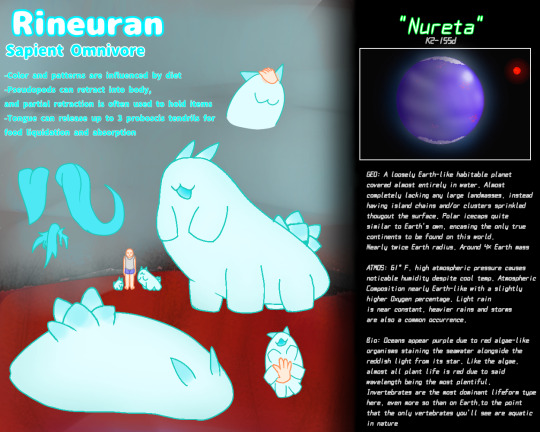
Also a tidbit I forgot to mention in the drawing is that they essentially have different varieties depending on the environment their ancestors have adapted to. And due to their planet's sheer humidity , all of them can exist on land, but there are those who are better adapted to the oceans (the majority of their population) and those who are better fit for their islands (the minority of their population). I might draw some examples later to represent the different races within the species after coming up with some of them.
#artists on tumblr#digital art#artwork#art#aliens#sea slugs#nudibranch#the fucking thing#the nature of predators#nop fanmade species#the blorbos#speculative biology#cute#blob#adorable#the sillies#planet#k2-155b#super earth#red dwarf star#squishy#*resisting the urge to grasp firmly*#fun fact they have 12 eyes#but they are small enough to be mistaken for freckles#yeah the Federation hasn't reached far enough to cull any variety in their population from the gene pool#and that alongside being invertebrates is how you reach enough genetic diversity that some varieties are getting categorized as subspecies#and fun fact: they have 3 tongues#they're also less vulnerable to salt than earth slugs#but it can still give them a slow and agonizing death; just adapt your amount of salt to their size multiply that by 1.5#fictional species
17 notes
·
View notes
Text
So real talk...
I didn't anticipate getting THIS attached to my little bug buddies. Like. I knew I would like having them.
I would fucking KILL for this tiny little mantis and this eensy weensy spider. I talk to them. I check up on them and give them a "good morning" every morning. Both of them look at me when I speak to them. Bracken has this adorable little habit of waving his pedipalps or one of his little paws at me (and yes! Spiders have paws). I don't handle either of them but I wish I could pet them (and I may feel more comfortable handling them when they're both bigger, they're just so tiny right now).
I fucking love these little guys. I want more of them. I adore them. Bug hyperfixation is back in full swing.
#personal#bugblr#like okay I KNOW I want a tarantula someday#honestly I've wanted one since I was a kid#and the pumpkin patch is a dwarf variety and is small and has relatively easy care#obviously I'm going to wait on that for a bit but like#also tarantulas are a multi year commitment
17 notes
·
View notes
Text

lmao so I caved immediately and got Veilguard despite my lack of free time in the near future. Anyway, my Rook kicks ass and I'm already in love with her.
Also, this character creator is the first one I've seen where I'm not restricted to a slender/curvy model if I want my character to have tits, and that's beautiful.
#Mipe plays#dragon age#dragon age veilguard#the beard is less remarkable in modern gaming#but in the context of dragon age I do want to note that I'm relieved I can give my dwarf lady a real beard#Inquisition only deigned to give them a variety of stubbles#which looked untidy so I never used them
3 notes
·
View notes
Text
thanks to the person who donated and said "to send bluebell to college" bluebell is dead but I'll be sending steve in his place, hope that's ok
#i didn't have a good picture of steve so i used bluebell lmao;; sorry for the hamster fraud#steve is a dove morph campbells dwarf hamster and is actually the variety i was looking for when i adopted bluebell#bluebell had been there for a long time because he was biting due to his blindness and people not warning him before they touched him#so i gave up my search for a dove hamster and adopted him#rhubarb.txt
2 notes
·
View notes
Text
pomegranate
Pomegranate
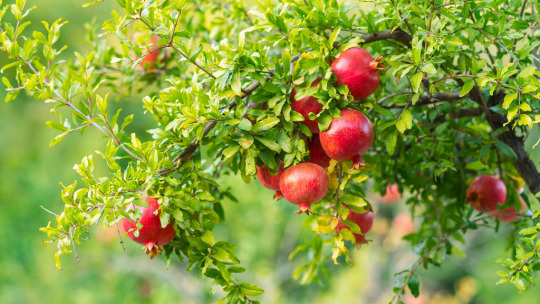
The pomegranate is famously known as the fruit of heaven belongs to the berry family. Pomegranate fruit is a delicious fruit and has juicy grains inside. Grow pomegranates as large, shrub or small trees.
Types

There are 1200 different varieties of pomegranate which have unique tastes and various colours. There are purple hearts, Eversweet, wonderful, kazake, red silk, texas pink.
Purple heart
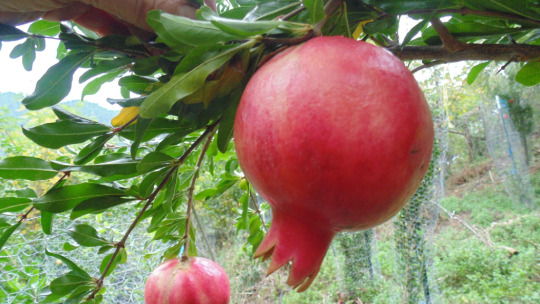
Purple heart varieties are large with dark red. Fruits begin to produce at about 3 years old. Pick fruit off a tree when it is mature. These pomegranate plants grow 12-30 feet tall and wide. Provide lots of health benefits. They are the best immune boosters and good healers.
Eversweet
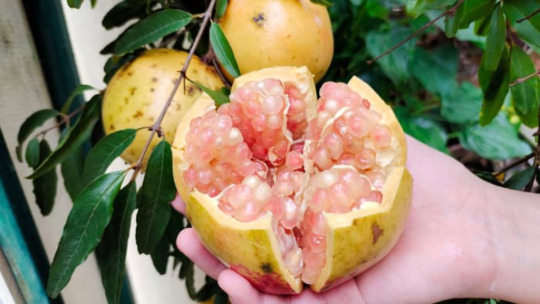
The color of the pomegranate is pinkish-pale red. Eversweet seeds are a little hard in texture and are highly nutritious containing vitamins A, C and E. Pomegranate trees are glossy, narrow leathery leaves which are lance-shaped. These varieties are self-pollinated. This is a national fruit of Iran.
Kazake
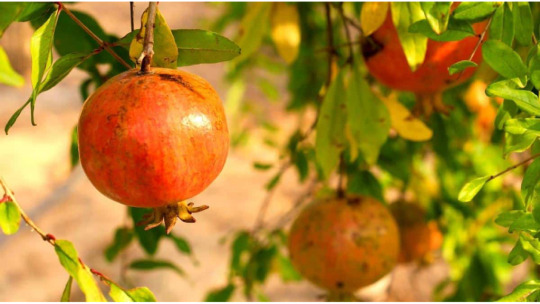
Kazake varieties produce medium to large size fruit. This is the most dwarfing species. This pomegranate plant is fast-growing with drought tolerant. This is a seeded fruit and it has a thick reddish outer covering. These flowers often fall off the branches rather than converting into fruit.
Red silk
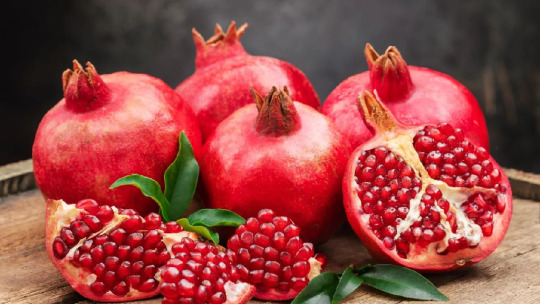
Red silk is the best pot-growing variety, which is a semi-dwarf growth habit. It has dark red flesh and red arils. Grows trees in hot and dry climatic conditions. Its contain fibre which keeps our digestive system healthy.
Texas pink

Texas pink pomegranate plant produces attractive blooming which converts pink fruits. This variety is a famous ornamental fruit plant. Texas pink is a self-fertile plant. It has large edible seeds.
Wonderful
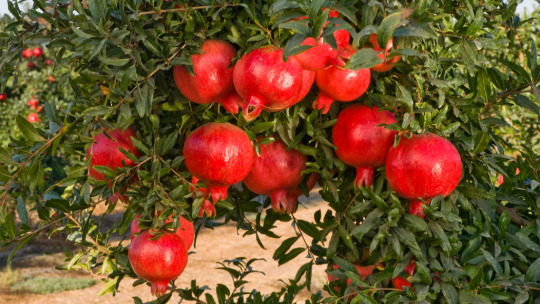
Wonderful pomegranate plant is the most common variety grown in the low desert of Arizona. Mix a teaspoon of natural honey in half a liter of water and spray directly on the flower with the help of a spray bottle. This will attract honey bees for pollination. This tip helps to increase the yield. This fruit is too sweet and highly beneficial.
Seed
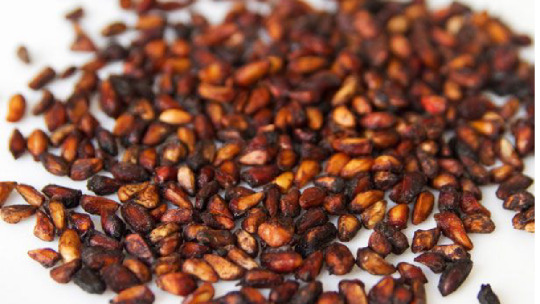
In this Punica granatum fruit plant seeds are also edible. It contains vitamins, minerals and antioxidants. In average one fruits can hold 1000 seeds. Seeds are covered with glowing red skin.
Soil

For better growth and development prefers to grow in well-drained loamy soil. Soil mix with 80% bone meal and 20% neem cake.
Water
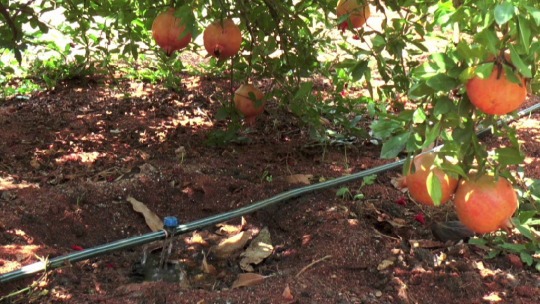
For mature pomegranate tree, adequate irrigation especially during the dry periods is very important to improve growth, fruit set, yield and fruit size.
Sunlight
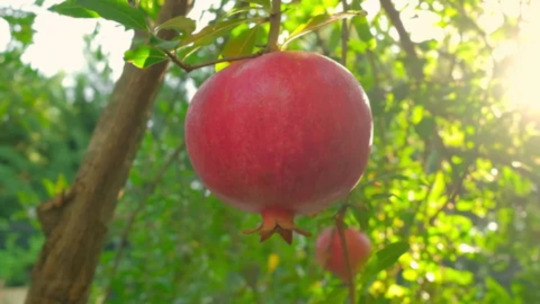
Select the location to keep the pomegranate plant with plenty of sunlight. In cooler climates, plant pome tree with western exposure. Requires 6 hours’ of direct sunlight.
Fertilizer
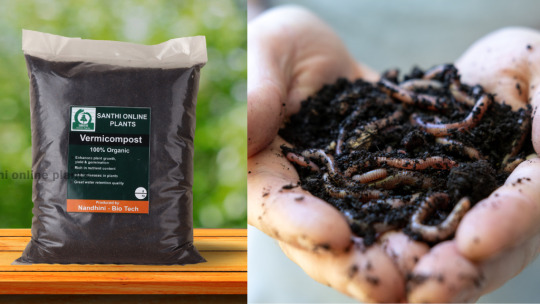
Good organic mulch and cow manure can improve plant growth and soil fertility. Application of vermicompost at monthly intervals.
Repotting
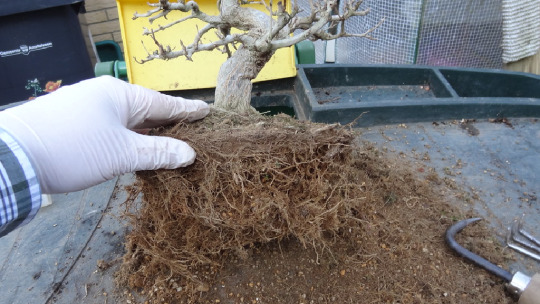
Repot the plant into a new pot when the root bound occurs. Normally repot the plant for two to three years.
Pruning
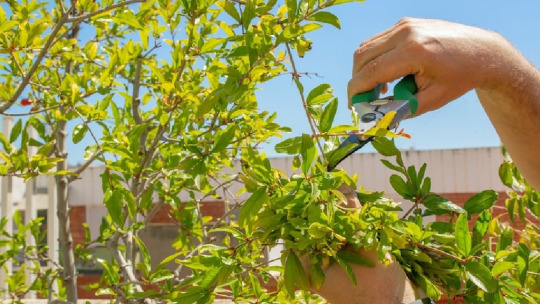
The best time for pome tree pruning is late winter, after harvesting the fruits. Branch pruning can increase fruit production. Pruning the roots will help to reduce root bound. Pruned the tree before repotting.
Benefits
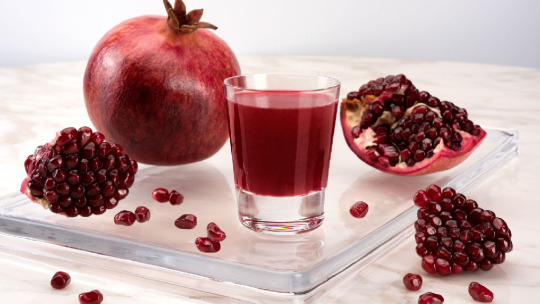
Daily consumption of pome gives us strength and energy
Its contain fibre which keeps our digestive system healthy.
Punica granatum helps to increase appetite.
Punica granatum is highly beneficial for pregnant women.
Reduces pain in joints and arthritis.
Keep your earth clean and green...!
#kazake#Kazake varieties produce medium to large size fruit. This is the most dwarfing species. This pomegranate plant is fast-growing with drought#Red silk#red silk#Red silk is the best pot-growing variety#which is a semi-dwarf growth habit. It has dark red flesh and red arils. Grows trees in hot and dry climatic conditions. Its contain fibre#Texas pink#texas pink#Texas pink pomegranate plant produces attractive blooming which converts pink fruits. This variety is a famous ornamental fruit plant. Texa#Wonderful#wonderful pomegranate plant#Wonderful pomegranate plant is the most common variety grown in the low desert of Arizona. Mix a teaspoon of natural honey in half a liter#Seed#seed pome#In this Punica granatum fruit plant seeds are also edible. It contains vitamins#minerals and antioxidants. In average one fruits can hold 1000 seeds. Seeds are covered with glowing red skin.#Soil#soil for pome#For better growth and development prefers to grow in well-drained loamy soil. Soil mix with 80% bone meal and 20% neem cake.#Water#watering for pome#For mature pomegranate tree#adequate irrigation especially during the dry periods is very important to improve growth#fruit set#yield and fruit size.#Sunlight#sunlight for pome fruit#Select the location to keep the pomegranate plant with plenty of sunlight. In cooler climates#plant pome tree with western exposure. Requires 6 hours’ of direct sunlight.#Fertilizer
1 note
·
View note
Text
Next hamster name will start with a P too i feel like it's tradition... poncho... paprika... pudding... pepsi... pesto...
#poncho winning in my mind bc it's cute and the last two hampters were food names we need variety!!!#when we got pumpkin we were originally intending to name her pepper but that name is kind of erm. irreversibly tied to something else now#teehee#i dont plan on getting a new hamster anytime SOON i just like to meticulously plan things in . my head#for example i know for sure im getting a dwarf this time rather than a syrian hamster
1 note
·
View note
Text
pomegranate
Pomegranate

The pomegranate is famously known as the fruit of heaven belongs to the berry family. Pomegranate fruit is a delicious fruit and has juicy grains inside. Grow pomegranates as large, shrub or small trees.
Types
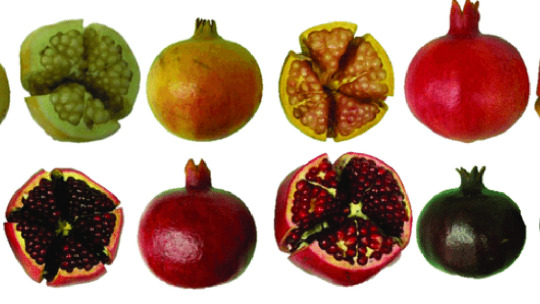
There are 1200 different varieties of pomegranate which have unique tastes and various colours. There are purple hearts, Eversweet, wonderful, kazake, red silk, texas pink.
Purple heart
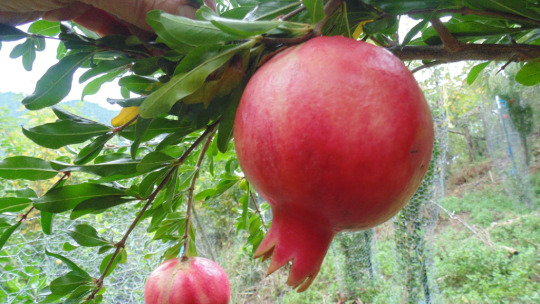
Purple heart varieties are large with dark red. Fruits begin to produce at about 3 years old. Pick fruit off a tree when it is mature. These pomegranate plants grow 12-30 feet tall and wide. Provide lots of health benefits. They are the best immune boosters and good healers.
Eversweet

The color of the pomegranate is pinkish-pale red. Eversweet seeds are a little hard in texture and are highly nutritious containing vitamins A, C and E. Pomegranate trees are glossy, narrow leathery leaves which are lance-shaped. These varieties are self-pollinated. This is a national fruit of Iran.
Kazake

Kazake varieties produce medium to large size fruit. This is the most dwarfing species. This pomegranate plant is fast-growing with drought tolerant. This is a seeded fruit and it has a thick reddish outer covering. These flowers often fall off the branches rather than converting into fruit.
Red silk
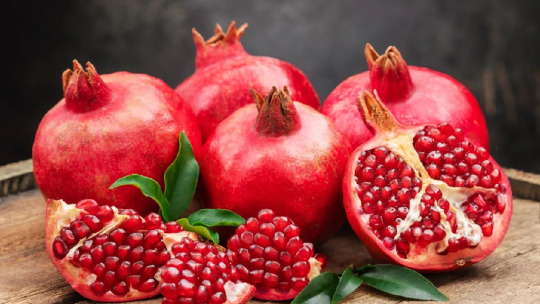
Red silk is the best pot-growing variety, which is a semi-dwarf growth habit. It has dark red flesh and red arils. Grows trees in hot and dry climatic conditions. Its contain fibre which keeps our digestive system healthy.
Texas pink
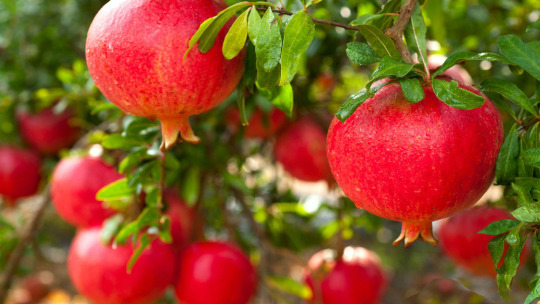
Texas pink pomegranate plant produces attractive blooming which converts pink fruits. This variety is a famous ornamental fruit plant. Texas pink is a self-fertile plant. It has large edible seeds.
Wonderful
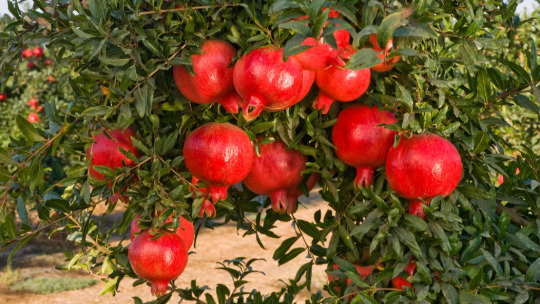
Wonderful pomegranate plant is the most common variety grown in the low desert of Arizona. Mix a teaspoon of natural honey in half a liter of water and spray directly on the flower with the help of a spray bottle. This will attract honey bees for pollination. This tip helps to increase the yield. This fruit is too sweet and highly beneficial.
Seed
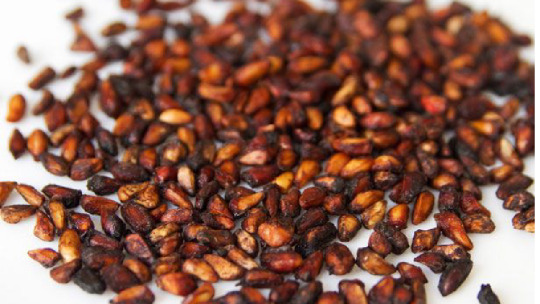
In this Punica granatum fruit plant seeds are also edible. It contains vitamins, minerals and antioxidants. In average one fruits can hold 1000 seeds. Seeds are covered with glowing red skin.
Soil

For better growth and development prefers to grow in well-drained loamy soil. Soil mix with 80% bone meal and 20% neem cake.
Water
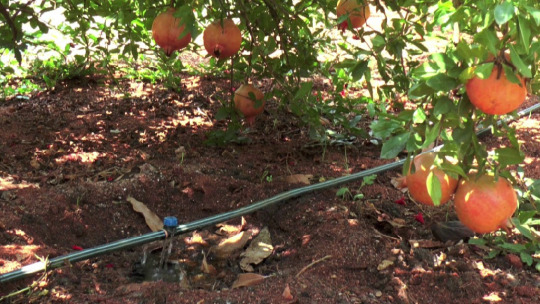
For mature pomegranate tree, adequate irrigation especially during the dry periods is very important to improve growth, fruit set, yield and fruit size.
Sunlight
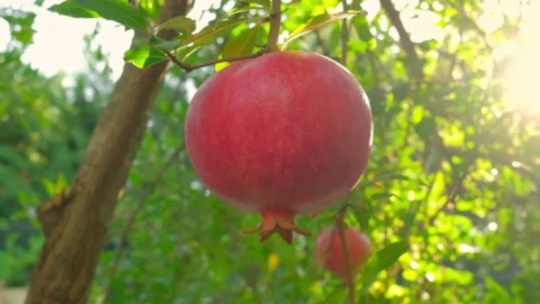
Select the location to keep the pomegranate plant with plenty of sunlight. In cooler climates, plant pome tree with western exposure. Requires 6 hours’ of direct sunlight.
Fertilizer
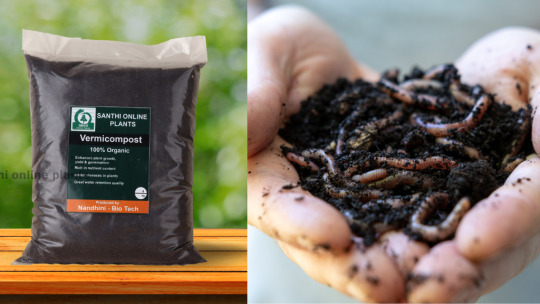
Good organic mulch and cow manure can improve plant growth and soil fertility. Application of vermicompost at monthly intervals.
Repotting
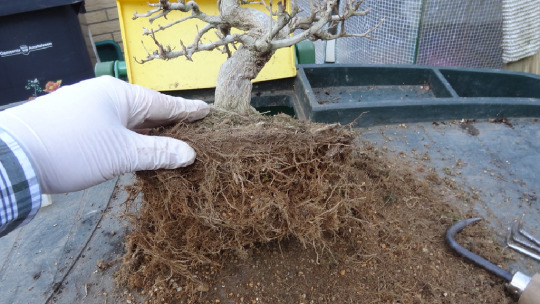
Repot the plant into a new pot when the root bound occurs. Normally repot the plant for two to three years.
Pruning
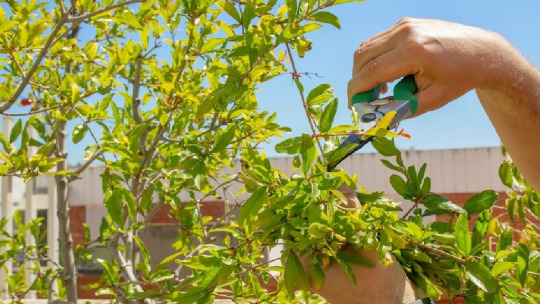
The best time for pome tree pruning is late winter, after harvesting the fruits. Branch pruning can increase fruit production. Pruning the roots will help to reduce root bound. Pruned the tree before repotting.
Benefits
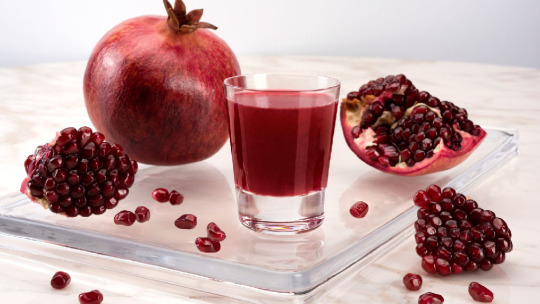
Daily consumption of pome gives us strength and energy
Its contain fibre which keeps our digestive system healthy.
Punica granatum helps to increase appetite.
Punica granatum is highly beneficial for pregnant women.
Reduces pain in joints and arthritis.
Keep your earth clean and green...!
#kazake#Kazake varieties produce medium to large size fruit. This is the most dwarfing species. This pomegranate plant is fast-growing with drought#Red silk#red silk#Red silk is the best pot-growing variety#which is a semi-dwarf growth habit. It has dark red flesh and red arils. Grows trees in hot and dry climatic conditions. Its contain fibre#Texas pink#texas pink#Texas pink pomegranate plant produces attractive blooming which converts pink fruits. This variety is a famous ornamental fruit plant. Texa#Wonderful#wonderful pomegranate plant#Wonderful pomegranate plant is the most common variety grown in the low desert of Arizona. Mix a teaspoon of natural honey in half a liter#Seed#seed pome#In this Punica granatum fruit plant seeds are also edible. It contains vitamins#minerals and antioxidants. In average one fruits can hold 1000 seeds. Seeds are covered with glowing red skin.#Soil#soil for pome#For better growth and development prefers to grow in well-drained loamy soil. Soil mix with 80% bone meal and 20% neem cake.#Water#watering for pome#For mature pomegranate tree#adequate irrigation especially during the dry periods is very important to improve growth#fruit set#yield and fruit size.#Sunlight#sunlight for pome fruit#Select the location to keep the pomegranate plant with plenty of sunlight. In cooler climates#plant pome tree with western exposure. Requires 6 hours’ of direct sunlight.#Fertilizer
1 note
·
View note
Text
Thunbergia
The Thunbergia plants are prized by plant enthusiasts & gardeners for their lovely flowers & beautiful foliage. This thunbergia plant named after the Sweden Botanist Carl Peter Thunberg for his immense work in the documentation of Thunbergia plant species.
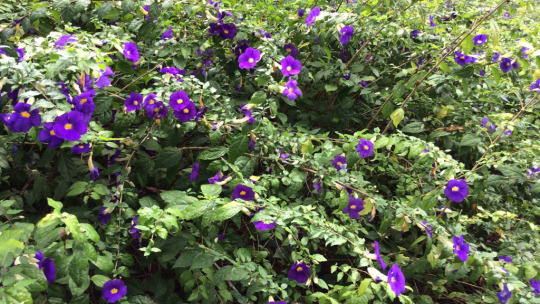
Plant Growth Habit
This plants are excellent creepers & flowering plants belongs to the Acanthaceae family with vibrant color flowers. This plant commonly named as clock vine & sky flower.
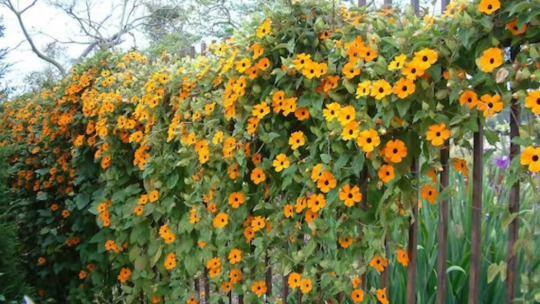
Sky Flower
The attractive sky flower plants contain 100+ plant varieties. Flower colors are blue, white, orange & yellow. This plant has a bushy & semi-climbing structure with a woody stem. Feathery flowers appear with yellow or center. In addition to this
it is fast growing plant that reaches up to a height of 6ft from the ground.
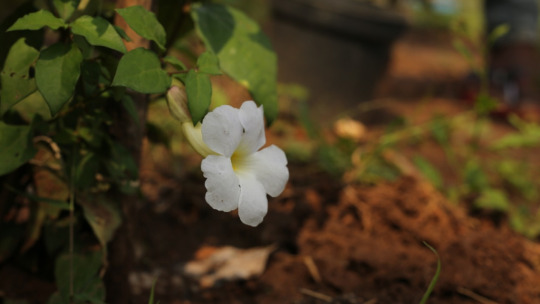
Clock Vine
The clock vine plant's popular varieties are thunbergia grandiflora, thunbergia erecta, natalensis, alata & dwarf varities.
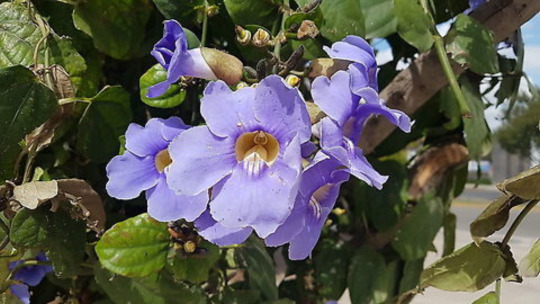
Thunbergia grandiflora
The grandiflora plants are native to India with large leaf foliage with lavender color flowers. Long roots with deep tap root system. It comes under annual plants.

Thunbergia natalensis
It is fast growing creeper plant with white & light blue colored flowers. And the plants are native to Africa. Thunbergia natalensis has trumpet-shaped flowers that are commonly called natal blue & natal white flowers.

Thunbergia erecta
It is a twinning erect perennial shrub with ovate dark green leaves & velvety purple flowers. It is also rapidly growing creeper plants.

Soil
The Bush clock vine plant loves to grow in well-drained soil rich in organic matter. These plants tolerate a wide range of soil but avoid growing in heavy clay soils.

Thunbergia creeper plants
Blog Created By: www.santhionlineplants.com
#w. This plant has a bushy & semi-climbing structure with a woody stem. Feathery flowers appear with yellow or center. In addition to this#it is fast growing plant that reaches up to a height of 6ft from the ground.#sky flower#Clock Vine#The clock vine plant's popular varieties are thunbergia grandiflora#thunbergia erecta#natalensis#alata & dwarf varities.#clock vine#Thunbergia grandiflora#The grandiflora plants are native to India with large leaf foliage with lavender color flowers. Long roots with deep tap root system. It co#thunbergia grandiflora#Thunbergia natalensis#It is fast growing creeper plant with white & light blue colored flowers. And the plants are native to Africa. Thunbergia natalensis has tr#thunbergia natalensis#Thunbergia erecta#It is a twinning erect perennial shrub with ovate dark green leaves & velvety purple flowers. It is also rapidly growing creeper plants.#Soil#The Bush clock vine plant loves to grow in well-drained soil rich in organic matter. These plants tolerate a wide range of soil but avoid g#thunbergia grandiflora soil#Potting Mix- Garden soil+30-40% compost +steamed bone meal +20% of cocopeat if needed alone.#steamed bone meal for clock vine#Water Requirement#Watering the plants regularly helps to grow healthy plants means keeping the soil moist. But the sky flower plants cannot tolerate waterlog#watering for sky flower#Sunlight#The bush clock vine plant thrives well in full direct sunlight with partial shade.#Pot Size#This creeper plant requires a pot size of 6-8'' while planting. After one of planting change the pot size to 12'' with good drainage holes.#sky flower poting
0 notes
Text
Not Exactly the Apple of my Eye
I wrote this for the @haunting-heroes-creative-games WWT Myths game last month, and subsequently co-won my first game!
Figured I'd post it here too, now that all the reveals have happened---have a DPxYJ/DPxDC Snow White AU Crack fic!
===
"You gotta be kidding me," Kon says as he looks down at himself, "this can't be real, right?"
"Feels pretty real to me!" Bart chirps happily, fiddling with his overly large green sleeves.
"Rad." Tim rolls his eyes, crossing his arms and popping his hip and yawning like a disgruntled cat. Sarcasm practically drips from every orifice of his body language, even as he looks 2 seconds away from falling asleep.
"Is this what I think it is?" Cassie yells from further into the room, the sound of a small clamor echoing behind her words.
"If by it you mean some kind of inter-dimensional fucky wucky, then yeah!" Kon waves his arms around, gesturing to the room at large even if she can't see; Tim and Bart can, and that's all that matters. "I think so!"
"No, I mean is this Snow White?" Cassie clarifies as she comes huffing into the room. She too is adjusting her clothes as best she can, trying to figure out what to do with the glasses suddenly on her face.
The four of them stand gathered in the middle of the cottage they've been dumped into, freshly shrunken in height, stripped of their powers and gadgets and suits, and dressed in what seems to be simple cotton peasant shirts and work leggings.
They also have comically large and weirdly soft and sturdy leather shoes, of the Snow White Dwarf variety.
"Aren't there supposed to be seven of us?" Tim mumbles thoughtfully, another yawn causing him to slump and looking mad about it.
"How can you be so calm about this?" Kon huffs, picking up Tim with very little resistance for once and dumping the yawning boy onto a bed labelled Sleepy. Kon himself grumbles as he takes a seat on the next bed over labelled Grumpy.
An angry Kryptonian is not a great idea. Who let this be okay?
"I'm not calm about this…" Tim yawns once more, irritated, "I just can't think straight, I'm too tired."
"You don't sleep on a daily basis though?" Bart walks his way to his own bed, labeled Dopey and test bouncing it. "But it seems fitting at least. Plus, You're not straight anyway. Who's Cassie supposed to be?"
"Doc, I think." Cassie goes to her own bed, looking at it dubiously before deciding to ignore it completely. "He's the only one with glasses right?"
"That…" Tim is curled up on his side now, "still…doesn't answer…"
Soft snores start to drift through the room, another anomaly, considering Tim doesn't actually snore.
"What did the genie lady say?" Bart starfishes on his bed, making snow angels with no snow, "This is all because you decided to hit on her anyway."
"How was I supposed to know?!" Kon angrily pulls the covers off his bed to dump over Tim. "All I said was that she was pretty!"
Before anybody else can say anything, there's another clatter outside the cottage.
"Seriously!?" A voice screams, "Seriously?! Three years and you-" A violent sneeze interrupts the voice—"-still make fucking wishes?"
A small murmur answers the voice, barely audible.
Kon, Cassie and Bart look at each other, before scrambling over to the door. Tim stays dead asleep. When they burst out, tumbling over each other, they're met with the other three dwarves: A young gothic looking girl who keeps sneezing, an African American boy hiding behind another boy with a bedsheet of all things tied around his neck like a cape. The caped boy, with his black hair and blue eyes, looks like he's trying to be a knock off superman.
Kon does not like that. At all.
"Hey!" Rao, it's like he has no control over his temper, "Were you guys fucked over by the genie lady too?"
"Language~" Bart singsongs, giggling. The gothic girl whirls towards them, angry like spitfire, and sneezing just as violently.
"Hello, citizens!" Super-knock-off intones, "What brings you into the ill graces of Desiree?"
"If by Desiree you mean the genie lady," Cassie jabs a thumb at him, "then this guy hit on her."
"O-oh," The shy boy still hiding behind Super-knock-off is blushing hard enough that Kon can see it even with his darker skin, "w-wow, you're pretty…"
"Thanks!" Cassie smiles, winking at him. "The ladies love it, anyway."
The boy squeaks, hiding behind super-knock-off again. Goth-girl rolls her eyes before addressing Cassie.
"Desiree hates that-" a sneeze, "-kind of shit." Goth-girl rubs her nose, to which the bashful boy passes her a tissue from his backpack as if dealing with a rabid animal. The girl takes it with a scoff-turned-sneeze.
"Figured." Cassie shrugs, waving to herself. "I'm Cassie, by the way. Grumpy over here is Connor, and Cutie Pie down here is Bart."
Kon huffs, waving begrudgingly as Bart does a happy little wave.
"Nice to meet you, I'm Danny!" Super-knock off puffs out his chest, before gesturing to the once more sneezing Goth. "This is Sam, and behind me is Tucker!"
"We're not—usually like this." Sam sniffles, sneezing between pauses, "Danny's usually more chill, and Tucker's not this—shy. But if my—math is mathing, it's because—of the dwarf traits."
"Why does being Happy make him so…" Kon sneers, "Do-goodey?"
"Long story. We call him Super Danny in this state." Tucker smiles, peeking out a little more, "Fun Danny was better."
"Hey!" Danny wraps an arm around his friend to bring him up to the forefront, causing Tucker to squeak. "Super Danny had his moments!"
"Where's-" Sam sneezes four times in a row, "-Sleepy?"
"Our friend Tim." Bart gestures towards inside the house, "He's napping in one of the beds inside. He's usually an insomniac, so this is actually pretty great!"
"So," Cassie gets them back on track as they all convene around a sleeping Tim. "Do you guys know how to escape?"
"That is difficult," Danny hums, patting at Tucker who seems to be taking deep breaths to overcome his shyness. Kon tries to follow suit, to temper himself. "Did you perhaps make a wish when hitting on Desiree?"
Kon felt his face go blotchy red, rubbing at his cheek with the back of his hand and looking away.
"Connor." Cassie's voice goes threatening, hands on her hips like a mom scolding a child.
"All I said was Move over Snow White, 'cause you're truly the fairest in the land!" Kon grumbles, crossing his arms. "And that she made me all Bashful, or whatever! I didn't wish for anything!"
"All I did was wish Sam would lighten up," Tucker scratches the back of his neck, inching closer to Danny when Sam bears her teeth. "Normally Desiree would just make Sam glow, or something."
"Who is Desiree anyway?" Bart starts to frown down at himself, rubbing his tummy absentmindedly. "We were just having lunch with Tim's brother-"
Suddenly Kon, Cassie and Bart whip their heads towards each other, exclaiming at the same time: "Dick!"
"Language?" Tucker, who had startled at the sudden yelling and is firmly hiding behind Danny again.
"No, Tim's brother, Richard—he goes by Dick." Cassie explains as the three of them separate to look under furniture and through the house for the older man. They collectively ignore the whispered on purpose? from the other trio.
"He was with us when we got snapped here." Tim yawns, rubbing his eyes and sitting up. "Who are you?"
The new trio introduces themselves to Tim as the rest of them split. Kon is looking under the beds, Bart is upstairs, and Cassie is opening cabinets in the kitchen, if the sounds are to be believed.
"This doesn't really feel like Desiree's usual fare." Sam taps her foot, for some reason the only dwarf who was able to keep her own black studded combat boots. It looks comical paired with her brown shirt and red pants. At least the black belt matches?
"How would you," Tim yawns, standing up and leaning heavily against Kon when he comes back around. "Usually…get rid of her?"
"Usually Phantom would deal with her." Tucker mumbles as Sam starts to pace. She's no longer sneezing now that they're inside, which seems odd.
"Who's Phantom?" Bart's voice bounces as he descends the stairs back to join them. "He's not upstairs, by the way."
"He's Amity Park's local hero!" Danny flashes a gleaming smile, before frowning. "Truly a mystery why she's hanging out around Bludhaven."
"What were you guys-" Kon is interrupted by Sam, who knocks twice on the window she's stopped in front of.
"Uh, guys?" She's staring at something confusedly, "Is Dick…uh, black haired, wearing eye-searingly ugly patterns?"
"That's…" Tim yawns again, sluggishly making his way over to Sam, "probably…him."
"I think he's in the backyard?" Sam tilts her head, "and I think we've found our Snow White."
The seven of them gather quickly around the window, pushing and shoving and…
"Is that a fucking glass coffin?"
===
Jazz has fucked up.
Oooooh she's definitely fucked up.
How was she supposed to know Ghost Writer and Desiree just wanted to hang out?
How was she supposed to know that Desiree's cousin was Scheherazade?
How was she supposed to know Ghost Writer knew that infamous One Thousand and One Night's protagonist?
She just wanted to finally meet her online friend and talk about Jane Austen books, have dinner with her brother and his friends in Bludhaven after!
She really should have aimed better. Stupid thermos, Danny always made it seem so easy!
Now she's running around in this random forest trying to find her brother and his friends dressed like some kind of Prince.
Why do Princes wear such white tights? It's impractical is what it is, there's already a bunch of dirt on the back of her calves!
She's been in this forest for what feels like hours when she hears it; sweet salvation in the form of other people. Jazz frantically makes her way towards it.
"—Snow White?" A boyish voice asks.
"Well, he's certainly—achoo!—pretty enough for it." Sam is saying—is she with the others? "Even with all…that going on."
"At least Danny isn't in the coffin this time?" Tucker sounds unusually shy and timid—it makes Jazz quicken her steps and almost trip over tree roots at least twice.
"Hey—" An unfamiliar feminine voice cuts in, "Tucker, what does that mean?"
"Worry not, Cassie!" Danny! Oh sweet souls, Danny!! "It's an inside joke!"
"It's not really funny…" Another voice, sounding sleepy beyond compare and yawning like a "…is it?"
"Believe it or not," The mysterious feminine voice, Cassie cuts in. "He's usually the one in charge of the brain-cell. We're smart too, he just has no humor."
"I…" Another yawn, "...resent that."
"Tim just doesn't have that sense of whimsy!" That first boyish voice cuts in, ignoring who Jazz presumes is Tim.
"Does that mean we have to find a Prince?" Another masculine voice, angry and fed up, "In the forest?"
And, well, there's never been a better time for Jazz to stumble ass over kettle into the clearing.
"Jazz!" Her trio yells in greeting, rushing over to her as she rights herself. She blinks.
They're all…a lot smaller than she left them. No matter, hugs first, confusion later. (And crying/yelling much much later after that).
They're small enough for her to hoist all three into her arms, even as she notices the other four dwarves and the…glass coffin housing a fully grown man.
"What the—" Jazz whispers, eyeing the strangers.
"Are you the Prince?" Danny asks, and in this form he reminds her so much of when he was little—she wants to squeal but she won't, she won't.
"I think I am." Jazz answers, putting everyone down as they clamor to introduce the new kids and update her on the situation. Jazz, through years of dealing with her brother's trio, manages to understand and reciprocate the exchange of information.
"So I have to kiss him?" Jazz looks at the man, Dick, in the glass coffin dubiously. "I don't even know him?"
"This might be the first time someone's seen him and not kissed him on sight." Bart jokes, "Or, at least, not wanted to."
"Consent is important." Jazz scrunches up her face in consternation. "I will not subject someone to a kiss when they cannot consent."
"What about a kiss on the…hand?" Tim yawns, desperately trying to stay awake. "Nobody…said you had to kiss him on the…lips."
Jazz makes a face in thought. Hm. "What about you?"
"What…about me?" Jazz gestures at Dick when Tim looks at her in confusion.
"He's your brother, you love him, right?" Jazz picks up the sleeping man's hand. "Nobody said it had to be romantic love. Besides, again, I don't believe in love at first sight. I'm demi."
"Demi like, demigod?" Cassie's brow furrows. "What's that got to do with anything?"
"Demi as in demi-sexual or-" Sam sneezes, "-demi-romantic."
Tim seems to think on that a moment, before shrugging. "I do love him. And I used to have a crush on him when I was little, before I got adopted." He picks up the hand and kisses it lightly.
"Oh dude, same." Connor laughs, turning to them. "I think everyone's had a crush on Dick before."
"Not me!" Cassie harrumphs to Bart's laughter and agreement. "Though I do love the guy."
"That doesn't count!" Connor huffs, "Lesbians and Aces are obviously excluded!"
"I'm Ace…" Tucker shyly raises his hand, making a little eep! sound when everyone turns to him. "And I, uhm, have eyes. He's real pretty…"
"Fairest of them all," Sam sniffles, sort of agreeing. "And all that."
"I think," Danny cuts in, "That you have no choice here Jazz. I'm sorry, but it doesn't seem like Tim's kiss is the solution!"
Jazz eyes the sleeping man once more, pursing her lips. No, she really doesn't think she'll do that. Pretty as he is, he's a stranger. And bodily autonomy is important, even if it's just his hand. It sounds like this guy has a lot of admirers, but nobody's actually said anything about how Dick himself feels about it.
Plus, he definitely looks at least a couple years older than her. Though it's hard to tell when you're in your mid twenties.
"Just think of it this way, Jazz." Danny tries to gently say, "You're saving his life, sort of. Like CPR."
Jazz hums, leaning over the man and observing the man's throat. Hm...
"What's she taking so long for?" Cassie whispers, to which Sam only sneezes in response.
Jazz grabs the man by the shoulders, sitting him up and…whack!
"Jazz!" The chorus of children yell at her, some even grabbing at her but she ignores them.
She gives the man's back another smack! And then another, and another until—
Hack! Dick coughs out the piece of poisoned apple lodged in his throat, taking in deep breaths as Jazz rubs his back in support.
"Th-thanks." Dick wipes at his mouth, smiling up gratefully at Jazz. She smiles back, before stepping away to let Tim and his little friends crowd over Dick and give him hugs.
Sam, Tucker and Danny make their way to Jazz, and they watch the reunion fondly.
"How'd you know that would work?" Danny asks her, laughing as Jazz shrugs.
"In the original fairy tale, the Prince discovers Snow White in her glass coffin and decides to keep her because she's so beautiful." Jazz bares her teeth in disgust. "The guards that were with him were kind of clumsy and dropped the casket on its corner, dislodging the apple piece from Snow White's throat. She wakes up, and then they get married."
"That's…" Tucker whispers, shuddering.
"Yeah." Jazz rubs her arms. "Figured I'd give it a shot. Thankfully it worked."
Just as Dick gets out of the coffin, the world around them starts to waver. The dwarven teenagers flicker until they're bigger, almost glitching into their original sizes and proportions. Sam stops sneezing, Tim stops yawning and falling asleep (though he still sports eyebags the size of Guam), and Danny's little blanket sheet disappears.
Jazz, Dick, and seven 17 year olds suddenly find themselves in the middle of the streets of Bludhaven, in the outdoor seating of the local restaurant all of them were eating at before the whole debacle.
Ghost Writer and Desiree are sitting at one of the tables, having tea.
"Well, that was certainly quick." Ghost Writer mumbles, Desiree groaning as she puts down her cup. "I thought we'd have at least a couple more hours."
"I knew I shouldn't have set win conditions." Desiree pouts. "We were just getting to the good part!"
"Every story has to have some kind of conclusion." Ghost Writer argues, jabbing his mug at her. "Besides, I can just-"
"Yeah. Nope." Danny deadpans, grabbing his backpack and jabbing a hand into the bag. "Fuck you."
Before Ghost Writer Desiree can do more than charge an ecto-blast, Danny pulls out a Fenton Thermos and aims it expertly at the two, sucking them up with very little fuss and muss. Jazz is not jealous or mad about it. At all.
As long as she doesn't have to wear those stupid white tights again, everything is A-OK.
"Well." Dick breathes, putting his hands on his hips like some kind of mom. "That was...anti-climactic."
"What the hell was that?" Tim asks Danny, trying to get a closer look at the thermos, "Is that a thermos?"
Jazz looks up at the restaurant, waving over a sever as she takes a seat and beckons for everyone else to do the same. The others start to squish in a couple tables and take seats.
"I'm sure everyone has questions," Jazz smiles up at the waitress in thanks as she passes out menus. "But first, since it's still…" She checks her watch, "just past three, lets have a late lunch, shall we?"
"As long as there's no apple pie for dessert." Dick laughs, opening up his own menu to peruse.
"As you wish!" Jazz rolls her eyes, grinning. Everyone at the table groans.
#danny phantom#young justice#core four#snow white au#dpxdc#dcxdp#dp x dc#dc x dp#my writing#dick grayson#jazz fenton#everlasting trio
408 notes
·
View notes